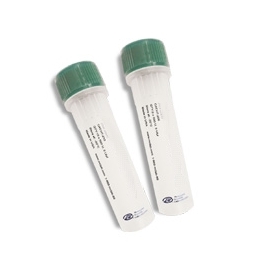 View full size
View full size
- Nucleic Acid Analysis
- Protein Analysis
- Biochemical Reagents
-
Enzymes
- Thermophilic DNA Polymerases
- Mesophilic DNA Polymerases
- Restriction Endonucleases
- Reverse Transcriptase and RNA Polymerases
- DNA/RNA Ligases
- RNases
- Proteases
- Nucleases
- Kinases
- Phosphatases and Sulfurylases
- DNA Repair Proteins
- Single-Stranded DNA Binding Proteins
- Chaperon Proteins and Disulfide Bond Isomerase
- Others
- Gene editing
- Molecular cloning
- Clinical diagnostics
- Human Identification STR kits
- Laboratory instruments
- Software
- A&A Biotechnology
- AdvancedSeq
- BioDynami
- Plant Cell Technology
News
-
XXXV. Izakovičov memoriál 2025
We are pleased to announce our participation in the prestigious XXXV. Izakovič Memorial 2025, which will take place on October 8–10, 2025 at the Grandhotel Praha, Tatranská Lomnica. The Izakovič Memo...
Read more -
1st Czechoslovak Congress of Medical Genetics 2025
In the spring, we will participate in the 1st Czechoslovak Congress of Medical Genetics, which will take place from April 2–4, 2025, at the Cultural and Congress Center Elektra in the spa town of Luha...
Read more -
RANK 2025
Visit us at the 19th edition of the RANK 2025 conference, which will take place on March 19th and 20th at the Zlatá Štika Hotel in Pardubice. The conference is organized by the Czech Society of Clinic...
Read more
 View full size
View full size
Recognition site: G(CH3)A^TC
Source:
An E. coli strain that carries the DpnI gene from Diplococcus pneumonia
Supplied With:
10x DpnI Buffer
10x DpnI Buffer:
500 mM Potassium Acetate
200 mM Tris-acetate
100 mM Magnesium Acetate
1 mg/ml BSA
pH 7.9 @ 25°C
Supplied In:
10 mM Tris-HCl, 300 mM NaCl, 1 mM DTT, 0.1 mM EDTA, 500 μg/ml BSA, 50% Glycerol
Recommended Storage Condition: -20°C
Typical ligation/recut assay results:
More than 70% of the pBR322 DNA fragments can be ligated and more than 95% of these can be re-cut after 50-fold over-digestion with DpnI.
Unit Definition:
One unit is defined as the amount of enzyme required to digest 1 µg of pBR322 DNA (dam methylated) in 1 hour at 37°C in a total reaction volume of 50 µl.
Comments:
Resistant to heat inactivation (20 minutes, 85°C). DpnI requires the presence of N6-methyladenine within the recognition sequence to cleave DNA. DNA purified from a dam+ strain will be a substrate for DpnI. DpnI will only cleave fully-adenomethylated dam sites. Hemi-adenomethylated dam sites DpnI cleaves 60X more slowly.
Cart
Payment gate



